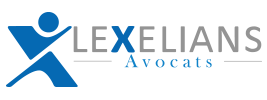Managing sick leave: how to reconcile performance and legal obligations?

Introduction
For several years now, French companies have been facing a steady rise in work stoppages, particularly due to illness. Between new legal obligations, the digitalization of occupational health, and the growing importance of employee well-being, Human Resources Departments (HRD) are on the front line. How can they manage sick leave in compliance with the law, while maintaining an acceptable level of performance? What is the role of the HRD in this delicate equation? This article provides a legal, managerial and operational analysis of this key issue.
The rise in sick leave: an overview
A structural increase
According to Assurance Maladie data, work stoppages have increased by more than 30% over the last ten years. The COVID-19 pandemic has amplified this trend, with an increase in work stoppages due to isolation, mental fatigue or post-COVID.
Multiple causes
Among the reasons given:
-
An aging workforce
-
An increase in musculoskeletal disorders (MSDs)
-
Occupational stress and psychosocial risks (RPS)
-
Better recognition of psychological pathologies
-
Recourse to sick leave in the event of professional disagreement becomes commonplace
Increasing costs for companies
In addition to the cost of maintaining salaries (conventional or legal), absences disorganize teams, increase the mental workload of those present, and weigh on productivity. This hidden cost is becoming a strategic issue for HR departments.
Legal framework and employer obligations
The right to time off work
All employees are entitled to sick leave if a doctor establishes the need for it. The employer can neither oppose the doctor's decision nor request a second medical examination on his or her own initiative, except in specific circumstances.
Employer's obligations
Major obligations include:
-
Keeping the reason for the stop confidential
-
Maintain wages in accordance with legal or collective bargaining provisions
-
Not punishing an employee for absence
-
Take into account the impact of absence on the health of the remaining teams
-
Organize a return visit (mandatory after 30 days' absence)
The role of the occupational physician
He is a key player in the recovery process, and can :
-
Suggest a workstation adjustment
-
Recommending unfitness
-
Supporting the company's prevention policy
Reducing absenteeism without breaking the law: levers to activate
Acting on root causes
Rather than dealing with the consequences, HR departments need to identify the real causes of absenteeism:
-
Internal audits
-
Anonymous social barometers
-
Absence interviews
-
Cross-analysis of HR data
Investing in quality of life at work (QWL)
Targeted actions help reduce sick leave:
-
Flexible working hours
-
Partial or total teleworking
-
Rest areas
-
Preventive health programs (nutrition, sleep, stress)
-
Managerial soft skills training
Set up individualized follow-up
Modern HR tools (HRIS, AI, HR big data) make it possible to spot weak signals:
-
Repeated micro-absences
-
Peak absences after appraisal interviews
-
Correlation between workload and declared pathologies
Practices to avoid: between harassment and discrimination
Illegal surveillance
Some companies use intrusive systems to verify the reality of downtime. These practices are often illegal and may result in sanctions.
Pressure for recovery
Pushing an employee to return too soon can worsen his or her state of health and expose the company to litigation.
Post-stop discrimination
Refusing a promotion or a change of position because of sick leave constitutes discrimination on the grounds of health, punishable by law.
Case study: the company that reduced its absenteeism rate by 20%.
An ETI in the logistics sector faced with an absenteeism rate of 8% implemented :
-
Preventive health workshops led by a physiotherapist
-
A system for coaching managers on weak signals
-
An overhaul of the scheduling organization
The result: 20% less absenteeism in 12 months, a calmer social climate, and significant productivity gains.
The return to work: a strategic moment
The takeover interview: an HR opportunity
Mandatory in certain cases, it enables :
-
Understanding the reasons for absence
-
Identify potential development needs
-
Creating a bond with the employee
Adapting the workstation
The occupational physician's recommendations must be followed:
-
Part-time therapy
-
Adapting schedules
-
Temporary or permanent change of position
Psychological support
The employee may feel guilty, pressured or isolated. One-off or long-term psychological support may be useful.
What does the future hold for sick leave management?
Towards greater digitalization
Platforms like declare.ameli.fr have accelerated the digitization of sick leave. Tomorrow, AI may make it possible to anticipate peaks in absenteeism.
The law on the "universal company prevention service
As provided for in the French occupational health bill, this new obligation will require companies to step up prevention monitoring. Work stoppages will be a key indicator to be analyzed.
An expanded role for the HRD
The HRD is no longer just a payroll manager or mediator. He or she is becoming a public health player within the company. He or she must combine legal rigor, managerial acumen and the ability to innovate.
Conclusion: act with strategy and humanity
Managing sick leave is not only a legal and financial issue, but also a deeply human one. It's not a question of "tracking down absentees", but of understanding the company's individual and collective weaknesses. By investing in prevention, respecting the law and trusting employees, HR managers can transform a problem into a lever for positive change.

